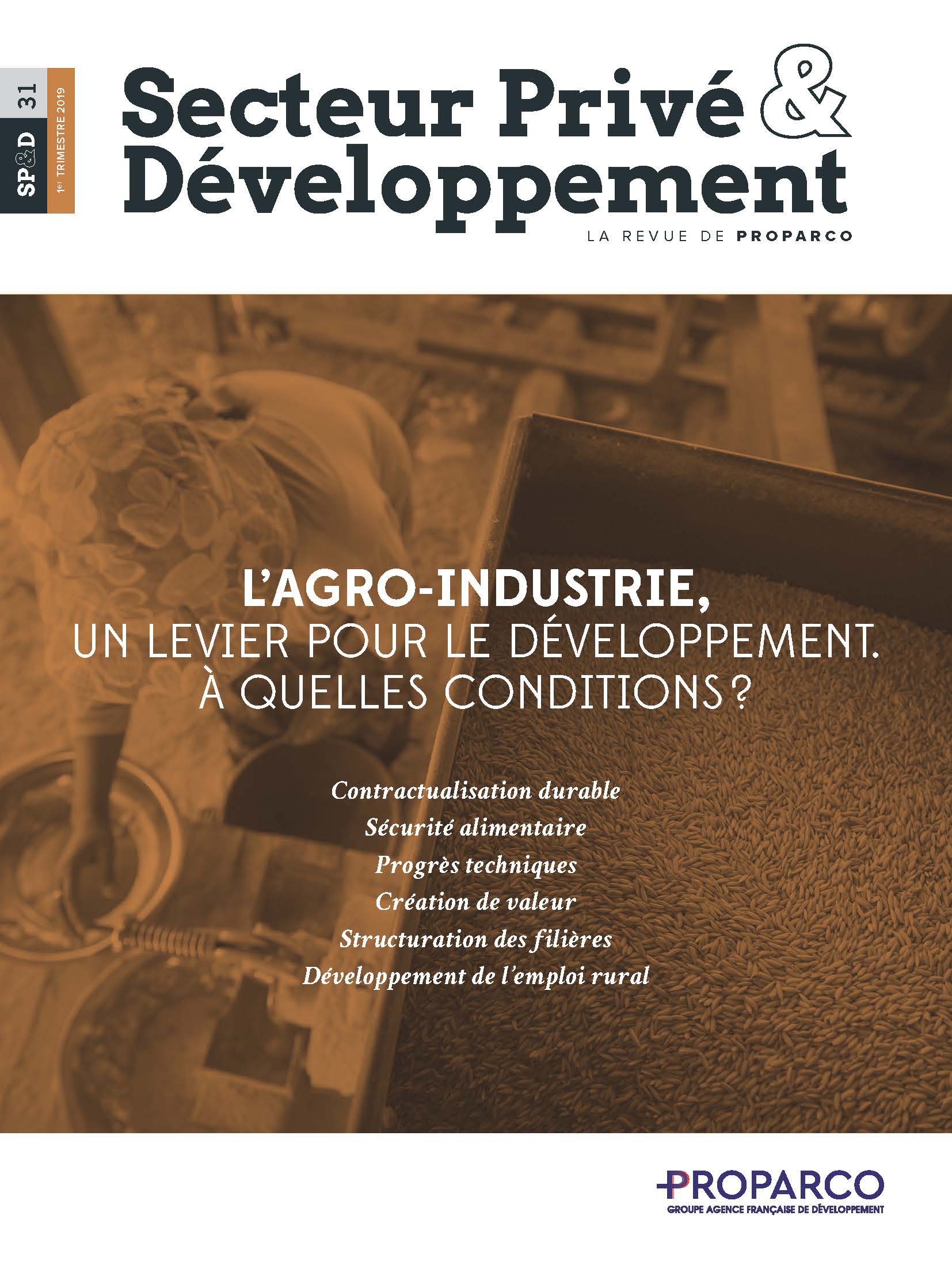Share the page
Using the Theory of Change to optimize the investment impact
Published on
Janske van Eijck Senior Manager Palladium


Private Sector & Development #31 - Scaling up the development impact of agro-industry
This issue of Private Sector & Development aims to demonstrate that the agro-industry, even if it sometimes brings up “negative externalities affecting the environment and small producers”, can be a major driver for development.
Agricultural programmes are a preferred instrument to achieve positive impact on local communities. Today’s DFIs, including Proparco, are looking for financial results but also aim to achieve economic, social and environmental impacts. It is in this context that the theory of change comes into play that can help to design more effective programmes.
The agriculture sector is the key source of income for many developing economies. Agricultural (investment) programmes are a preferred instrument to achieve positive impact on local communities. DFIs, including Proparco, offer financial services for agricultural clients using a high-level investment strategy with multi-faceted goals.
Why a theory of change?
Today’s DFIs are not just looking for financial results, but also aim to achieve economic, social and environmental impact. Recently, Enclude has performed multiple agriculture portfolio evaluations for development financiers such as Proparco, BIO and WBG's GAFSP program. We found that, across the board, many investments tend to be clear on the aspired goals at the “finish line” but often do not develop a roadmap of how to get there. As a result, they are missing out on the opportunity to leverage correlations and optimize impact, or to quantify all impact realized. In these occasions, developing a “theory of change” could provide many benefits. Having a realistic and thought-through theory of change with a clear intervention strategy will help to design programs that are more effective and achieve systemic change.
What is a theory of change?
A theory of change visualizes the intervention logic, and clearly shows how the intended results (impact, outcomes) can be achieved through the investment (inputs). In other words, it describes the channels through which the impact of the intervention is transmitted throughout the economy. It includes an overview of assumptions made by the DFI underlying the interventionlogic. A theory of change consists of SMART indicators, classified by one of four levels in the intervention logic: input, output, outcome and impact level (see figure 1).
Figure 2 reconstructs the theory of change of Proparco’s interventions in the agribusiness sector from inputs to impacts. The input provided by Proparco will help the company on the one hand, to achieve its “project” (e.g. increasing production capacity, improving product quality or processing technology), and, on the other hand, to increase its awareness on environmental and social (E&S) risks associated with its activity, which both represent the outputs of the project. Once the project is done, it will result in a certain number of positive outcomes directly related to the project’s objective, such as increased production, increased turn over, direct job creation (at the level of the company), compliance with international E&S standards, E&S certification or increased revenues for direct employees. In addition, the implementation of the project in the company will affect its whole value chain through e.g. increased production, indirect job creation, increased turn over and increased revenues at the level of the providers and suppliers of Proparco’s client. In the end, the impacts at the macroeconomic or value-chain level we could expect from Proparco’s agribusiness projects include economic growth (from job creation and increased revenues for companies and their employees), positive environmental effects (from the adoption of stringent E&S standards) and social development (through the implementation of satisfactory global working conditions at the level of Proparco’s clients and of their own clients).

